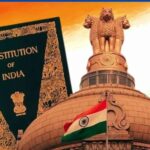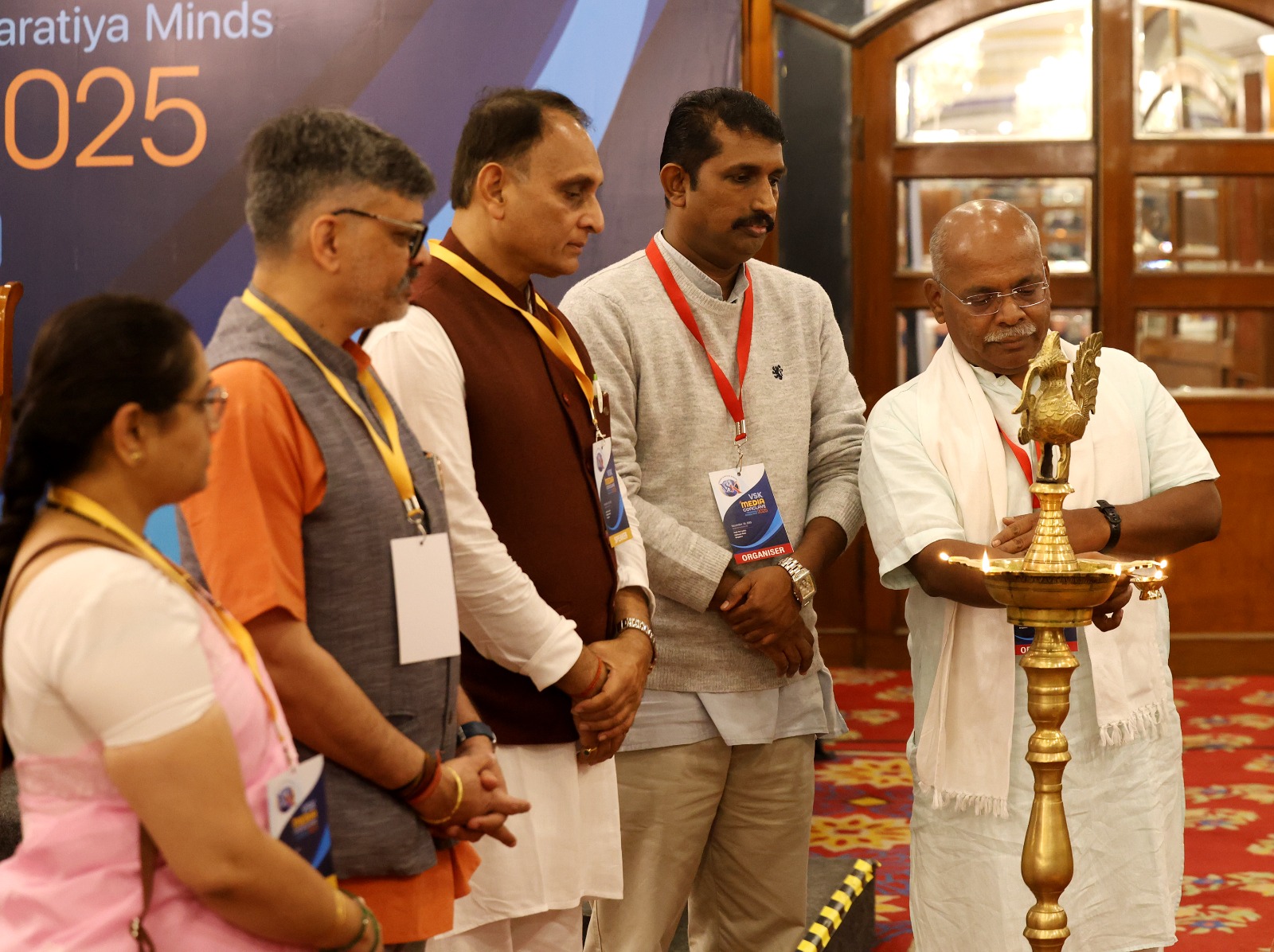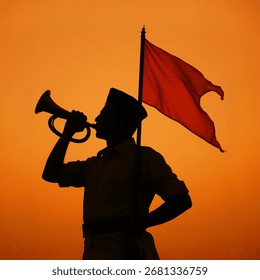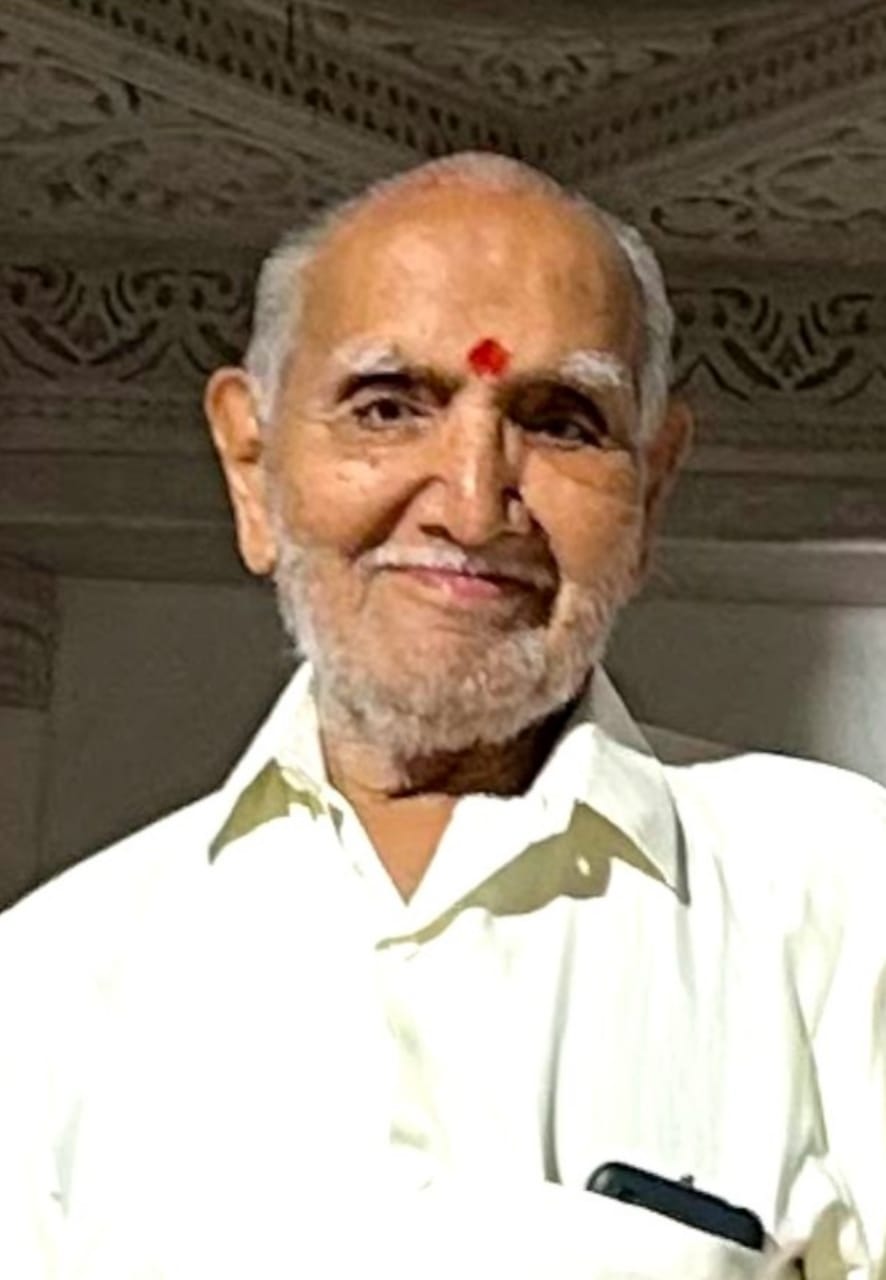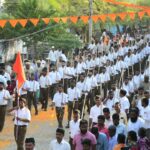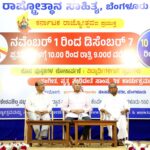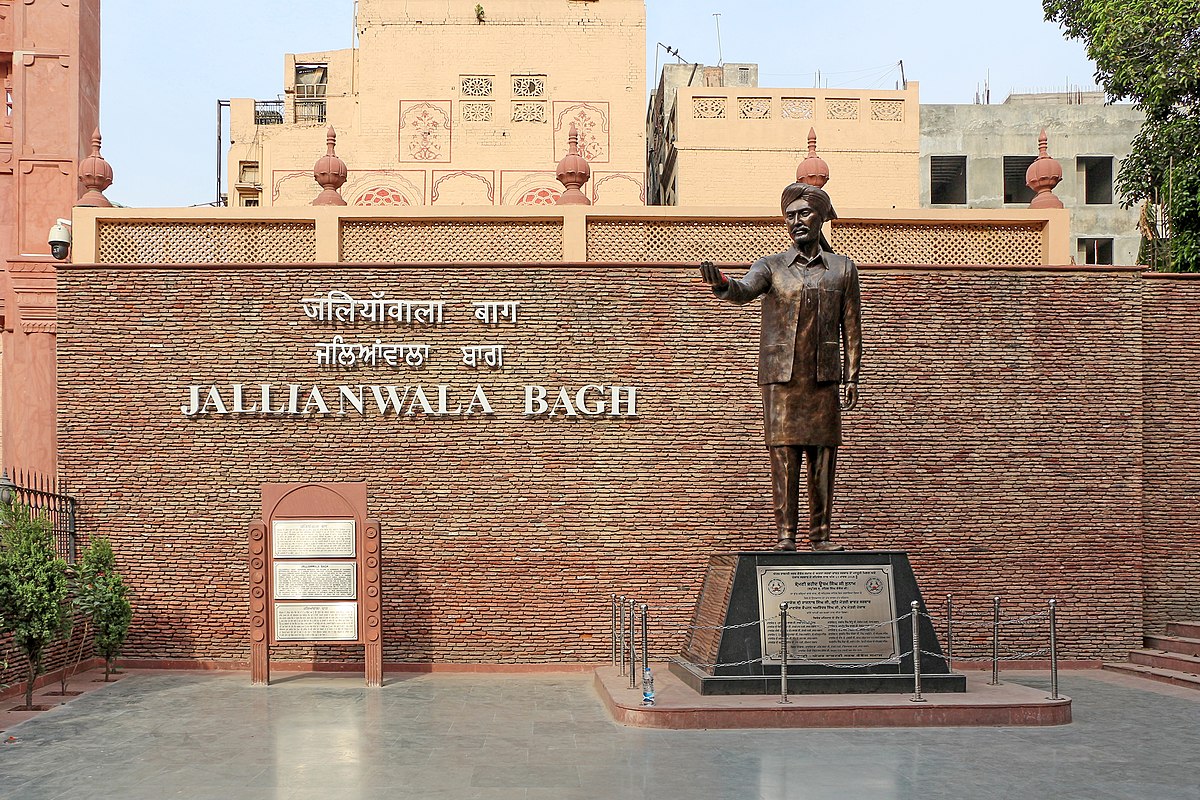
On April 13, 1919, at the festival of Baisakhi, British forces led by Colonel Reginald
Dyer opened fire on a large, unarmed crowd at Jallianwala Bagh in Amritsar, Punjab, killing hundreds and injuring…
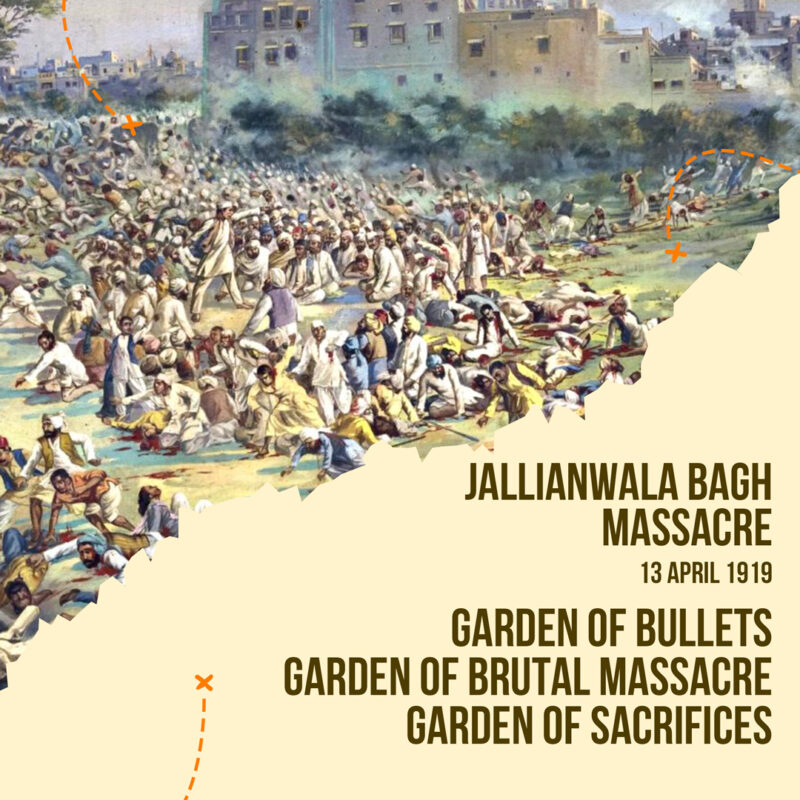
The Jallianwala Bagh Massacre, also known as the Amritsar Massacre, took place on April
13, 1919, in the city of Amritsar, Punjab, India. British troops, under the command of
General Reginald Dyer, fired on a crowd of unarmed Indian civilians who had gathered in the enclosed Jallianwala Bagh park for a peaceful protest against British colonial rule.
The troops fired for around ten minutes, killing at least 379 people and injuring over a
thousand others. The incident sparked outrage across India and became a turning point in India’s struggle for independence from British colonial rule.
General Dyer was widely condemned for his actions, both in India and in Britain. The British government eventually condemned the massacre and initiated an investigation, but no action was taken against Dyer, and he was actually hailed as a hero by some in Britain. The Jallianwala Bagh Massacre remains a significant event in India’s history and a symbol of the brutality of British colonial rule. It is remembered each year on April 13 as a day of mourning and reflection.
On the day of Baisakhi 13 April 1919, the whole of Punjab’s land was moaned, when Colonel Reginald Edward Harry Dyer, an officer of the British army who was made temporary brigadier general ordered the Indian soldiers recruited by the British Government to shoot the gathering at Jallian Bagh.When the garden was fired, then there was no way for the people to escape from there. Countless people, including men, women and young children, were martyred. On the plaque in the garden it is written that 120 bodies are found only from the well. Curfew was imposed in the city, due to which the injured could not be taken for treatment. People succumbed painfully there. The Deputy Commissioner Office of Amritsar
has a list of 484 martyrs, while the Jallianwala Bagh has a list of 388 martyrs. Records of the
British Raj admit that 200 people were injured and 379 people were martyred in this incident, of which 337 were men, 41 were minor boys and one was 6-week-old.
Why did the incident of Jallianwala Bagh happen?
The Rowlett Act (black law) was a law enacted by the British Government of India in March 1919 with the objective of crushing the national movement emerging in India. This law was made on the basis of the recommendations of the Sedition Committee headed by Sir Sydney Rowlett. According to this law, the British government had got the right that it could lock any Indian in jail without prosecuting them in court. Under this law, the right of the offender to know the name of the person filing the case against him was also abolished. Countrywide strikes, processions and demonstrations started in protest against this law. Gandhiji called for a comprehensive strike. On 13 April, a crowd of people gathered in Jallianwala Bagh to protest against the arrest of Saifuddin Kichlu and Satyapal. It was the day of Baisakhi and a meeting was held in Jallianwala Bagh, in which some leaders were going to give speeches.
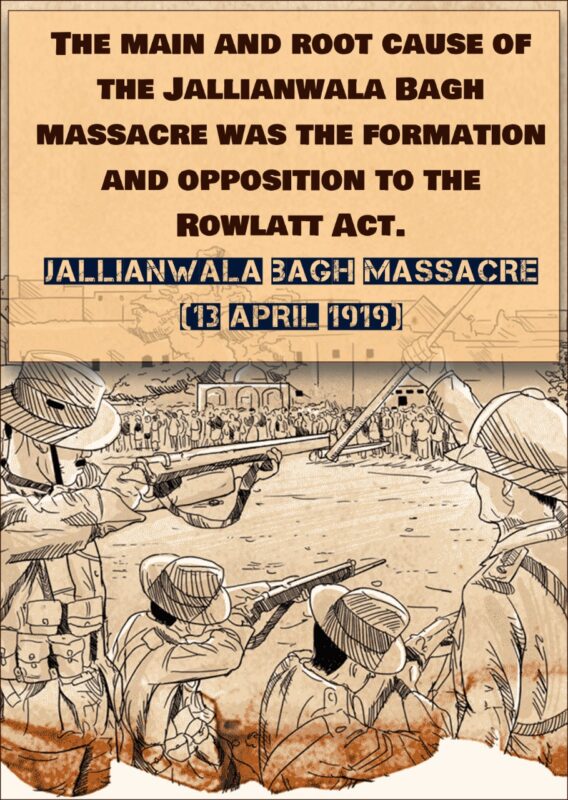
There was a curfew in the city, yet there were hundreds of people in it who came to see the
fair and visit the city with the family on the occasion of Baisakhi and went there after hearing the news of the meeting. The soldiers surrounded the garden and started firing on unarmed people without giving any warning. A total of 1650 rounds were fired in 10 minutes. There was no way to escape. Some people jumped into the only well in the field to save their lives, but on seeing this well, the well was also buried with corpses. Jallianwala Bagh was once the property of a man named Jalali. Gurudev Ravindra Nath Tagore returned his nighthood as a protest against this massacre. When this murder case was happening in Jallianwala Bagh, Udham Singh was present there and he was also shot. He then decided that he would avenge it. On 13 March 1940, Udham Singh shot and killed Dyer, convicted of the incident at Caxton Hall, London. Udham Singh was hanged on 31 July 1940.
After the Jallianwala Bagh scandal, the whole of India is patriotic together:
The courage of the people for independence was not defeated even after such a horrific event. In fact, the truth is that after this incident, the desire to gain independence began to inflict more vigor among the people. Although the present means of communication and mutual communication could not be imagined in those days, this news spread like fire all over the country. The desire for freedom not only in Punjab but also in the whole country began to speak with children. Thousands of Indians of that era determined to liberate the country by planting the soil of Jallianwala Bagh with the forehead. Till then, Punjab used to run something different from the main India, but this incident completely merged Punjab with the Indian independence movement. In memory of those killed in Jallianwala Bagh, it was decided to build a memorial here and in the year 1920 a trust was established and this place was purchased. The memorial was inaugurated by the then President of India Rajendra Prasad on 13 April 1961 in the presence of Jawaharlal Nehru and other leaders. Bullet bullets are also visible in walls, and nearby buildings, at this time. The well into which many people jumped and were trying to protect themselves is in the form of a protected monument inside the park. Bhagat Singh was 12 years old when the Jallianwala Bagh massacre took place and this incident had a profound impact on his thinking. On receiving this information, Bhagat Singh walked 12 miles from his school to Jallianwala Bagh.
Udham Singh, a young person, was also present during the incident to witness the entire carnage. He promised himself to teach a lesson to General Dyer and then-Punjab Governor Michael O’Dwyer after seeing piles of his people’s dead bodies. Udham Singh’s dream of avenging the Jallianwala Bagh massacre that had taken him to many countries. He travelled to numerous nations with other Indian revolutionaries. He went to Africa in 1920, America in 1924 and stayed there for three years and developed connection with Ghadar Party. He returned to India in 1927. With over a dozen helpers and a stash of weapons, Singh left India in 1927; he was arrested shortly after and sentenced to five years under the Arms Act. After his release in October 1931, he resumed his underground activities. He reached London in 1934 after travelling through several nations. Udham Singh joined a socialist organization that advocated for Indian workers and stayed in a house in East London. Finally, he got an opportunity to accomplish his mission. Michael O’Dwyer was scheduled to speak at a meeting of the East India Association and the Central Asian Society, now known as the Royal Society for Asian Affairs, on March 13, 1940, in London’s Caxton Hall. Singh entered the event. He had concealed a revolver within a book with revolver-shaped pages. Singh shot O’Dwyer two rounds as he approached the stage after the meeting and he lost his breath immediately. Singh was formally charged with murdering Michael O’Dwyer on 1 April 1940, and he was remanded in custody at Brixton Prison. Udham Singh was asked about his motivation, and he replied: “I did it out of resentment toward him. He was due it. The real culprit was him. I crushed him because he wanted to crush my people’s spirit. I have attempted to exact revenge for all 21 of those years. I am pleased with my performance. Death does not scare me. I will die for my nation. I’ve witnessed my people starving under British rule in India. It was my duty to protest against this.”
Singh was found guilty of murder and given the death penalty. Albert Pierrepoint executed Singh at Pentonville Prison on July 31, 1940. Prime Minister Narendra Modi while virtually unveiling the renovated complex of the Jallianwala Bagh Memorial in Amritsar on August 28th, 2021 said “Jallianwala Bagh is the place which inspired countless revolutionaries and fighters like Sardar Udham Singh, Sardar Bhagat Singh to die for the freedom of India. Those 10 minutes of April 13, 1919, became the immortal story of our freedom struggle, due to which we are able to celebrate the Amrit Mahotsav of freedom today. On such an occasion, the dedication of Jallianwala Bagh Memorial in the modern version in the 75th year of independence is an opportunity of great inspiration for all of us.”
